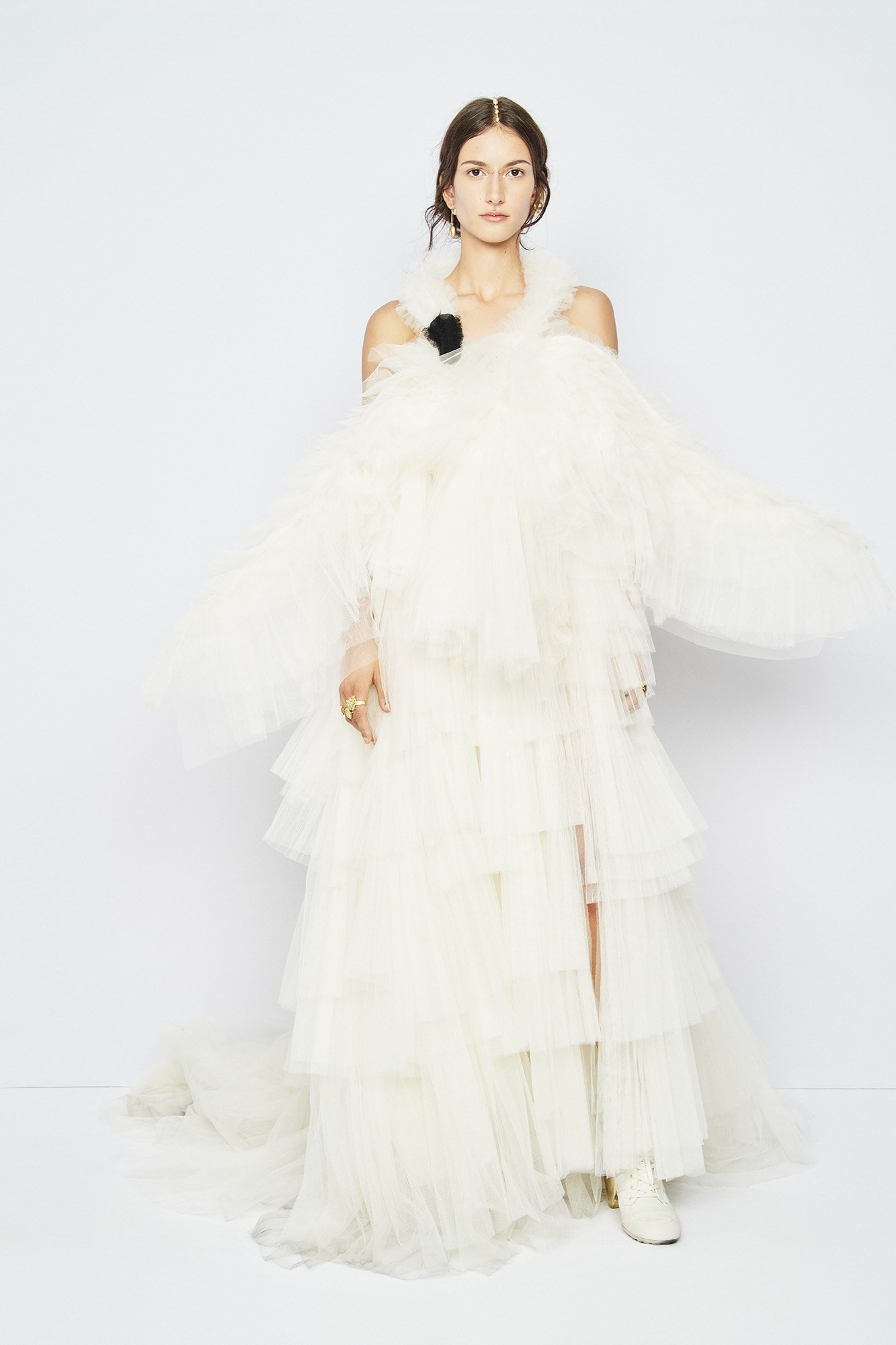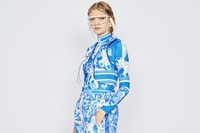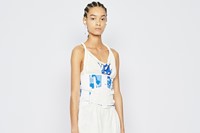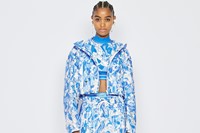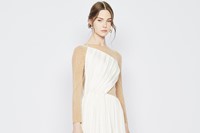Greece has always fascinated Maria Grazia Chiuri. “Since my first trip, I was always fascinated by its rich culture and history,” she said – and it shows in her clothes. Indeed, given that Christian Dior sought to save women from nature (his own words) by building monumental dresses of tailored wool, taffeta and horsehair to encase their bodies, the Grecian fluidity of recent Dior catwalks can be traced to Chiuri’s hands – and those of the formidable Dior ateliers, of course. In 2019, she created a winter couture collection exploring the draped peplos gowns of the Ancients, and others whose gossamer chiffons seemed more akin to mythology than modern-day reality. So a trip to Greece – with the world’s press in tow – was, perhaps, only a matter of time.
Dior went to Athens for its Cruise 2022 womenswear show, presented in the awe-inspiring Panathenaic Stadium, the only stadium entirely built of Pentelic marble. Originally constructed in 330 BC, it has been rebuilt time and again ever since – much like a heritage house, with shifting artistic directors renewing established foundations. In 1896, it hosted the opening and closing ceremonies of the first modern Olympics, but it has never hosted a fashion show until last week. Obviously, the current world situation impacted the presentation: around 400 press and celebrities, including the Greek president Katerina Sakellaropoulou, watched the Dior show on 17 June, in a stadium originally built for spectators numbering 70,000. Hopefully, those numbers will be back up soon.
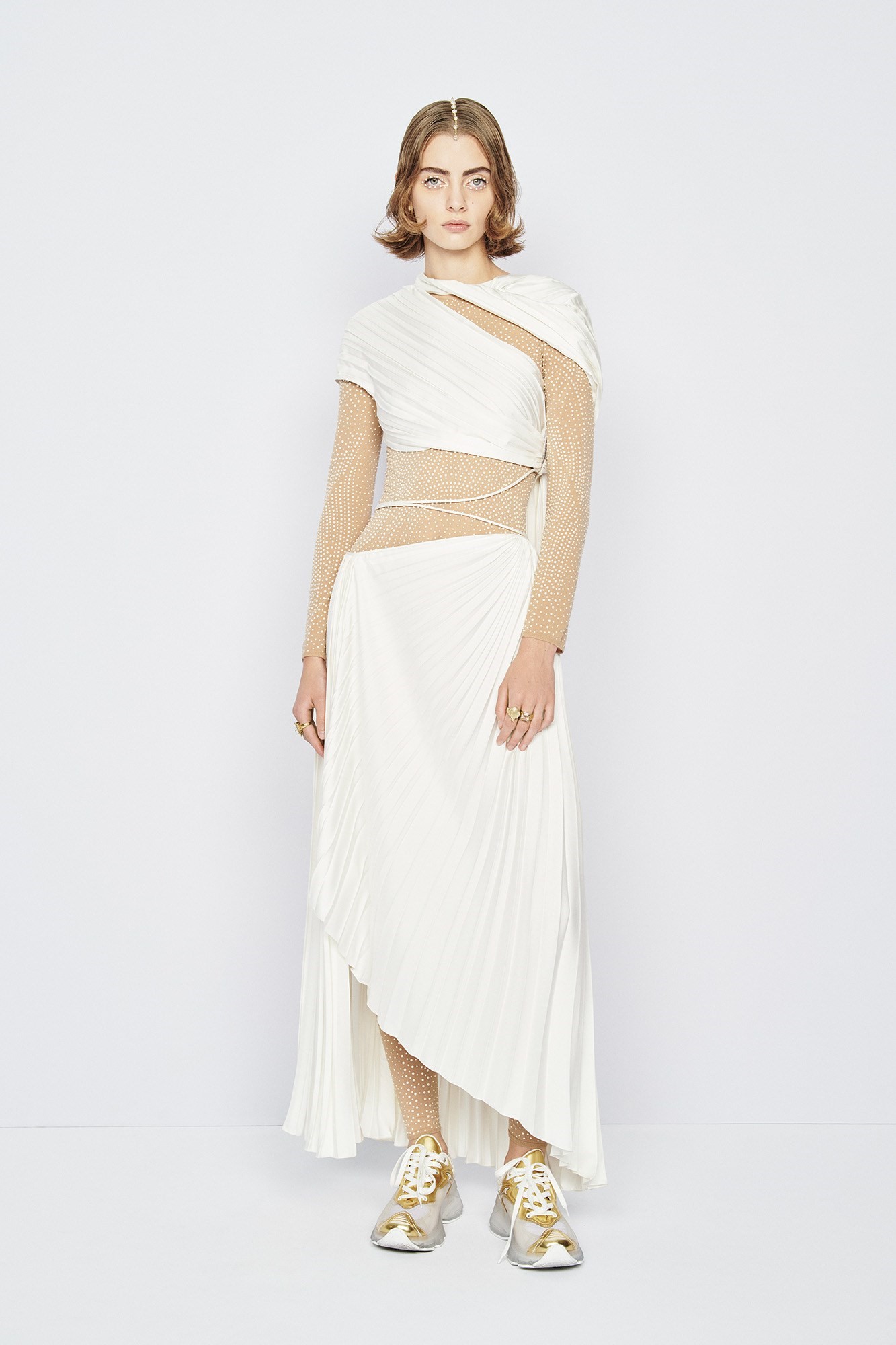
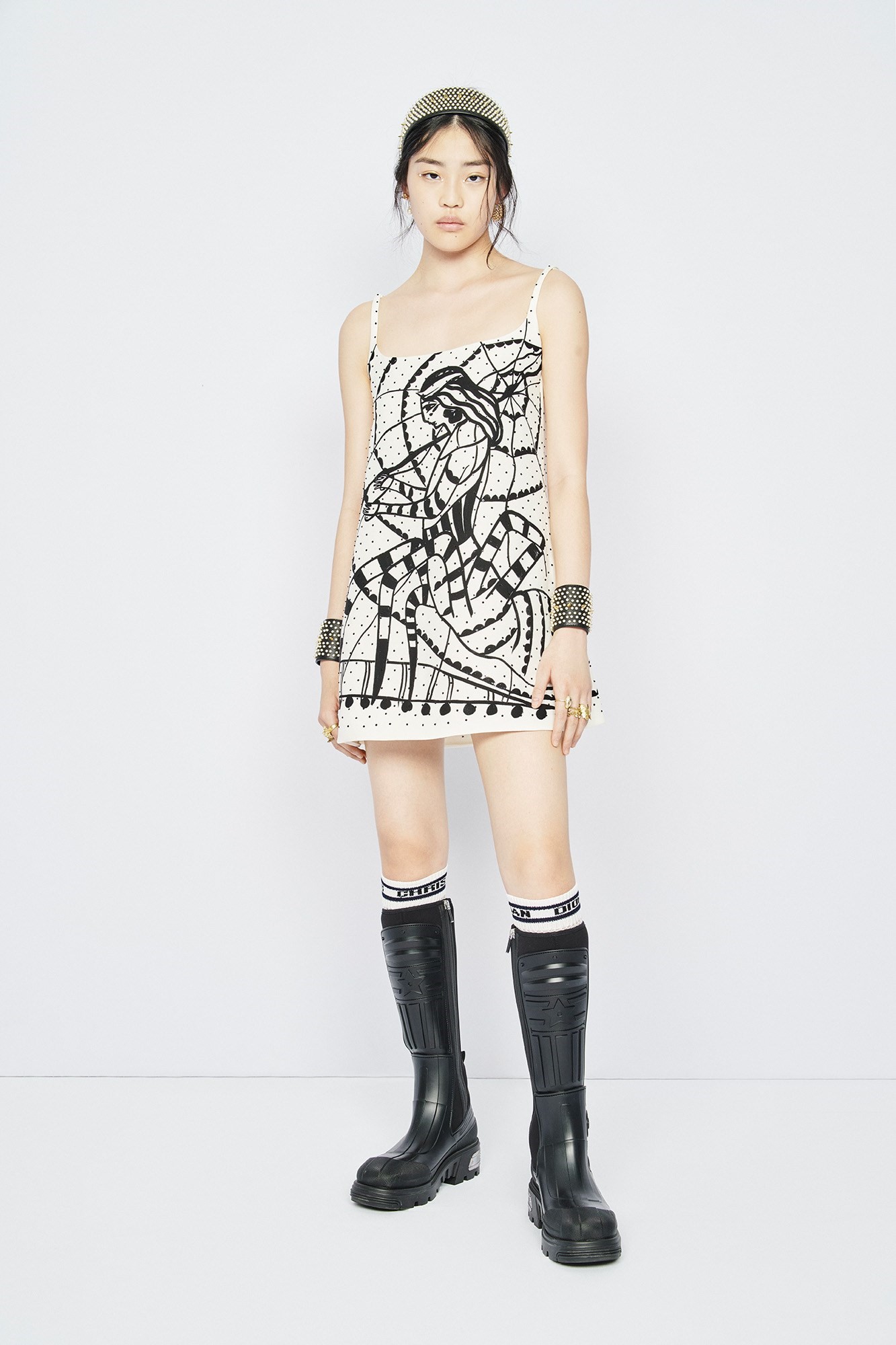
The house of Dior had been to Athens before: in 1951, Christian Dior himself posed models against the Acropolis for a shoot for Paris Match, drawing allusions between their constructed forms and the ancient architecture – Dior originally wished to pursue a career in the latter, before couture came calling. Those archival Dior dresses are sculptural, like those original monuments: many of his mid-century creations are so solid they can stand up by themselves. Chiuri’s clothes, however, are built for speed, movement, life and the dynamic modern woman. That was the message of this show, with models rocking on Dior sneakers as they bounded around the stadium floor. And Chiuri revisited the peplos in easily-draped dresses. “I sought to reflect the sense of freedom and creativity that this piece of clothing, represented throughout Ancient Greek art, so beautifully embodies,” she said, showing her collection in a city where sculptures of freely-flowing cloth punctuate every turn.
Dior is fundamentally, quintessentially Parisian. The freedom of movement Chiuri celebrated included cultural movement, ideas of Dior flowing to different parts of the world. But it wasn’t one-way – rather, there was a creative dialogue. As opposed to merely drawing inspiration from the locale, Chiuri engaged with its artisans. “The collection is a vibrant tribute to the idea of community and a celebration of cultural exchanges,” she stated. Chiuri and Dior collaborated with a phalanx of Grecian artisans and artists to realise the collection: Aristidis Tzonevrakis, a tailor and embroiderer, created a jacket and book tote; the centuries-old jacquard silks of the town of Soufli, executed by the artisans of Silk Line, reinvented Dior’s stripes and houndstooths; a producer of fishermen’s caps, Atelier Tsalavoutas, created its wares for the show; and two artists, Pietro Ruffo and Christiana Soulou, created patterns for prints and jacquards. Finally, Ioanna Gika, a Greek musician, performed a reading at the finale of the show. Oh, and ten Greek female photographers photographed proceedings, too.
The clothes themselves were a celebration of Greece, by these Greek artists – and by Chiuri also. The Dior Tailleur Bar became chalky, like marble, but fluid with plissé skirts or wide-legged trousers; delicate dresses were draped sensuously against the body, recalling the ‘muslin fever’ of late 18th-century France, when fashionable women reputedly wet their diaphanous gauze gowns to recall the clinging drapery of Ancient Greek statues, many perishing as a result. Those gestures to classicism, however, were fused with modern classics – sportswear, ergonomically designed, cut close to the body, accentuating its form, its activity. The finale, however, was all about goddess dressing – the last look inspired by the disturbing myth of Leda and the Swan. But, of course, the model wore it with sneakers. It is 2021 AD not BC, after all.
